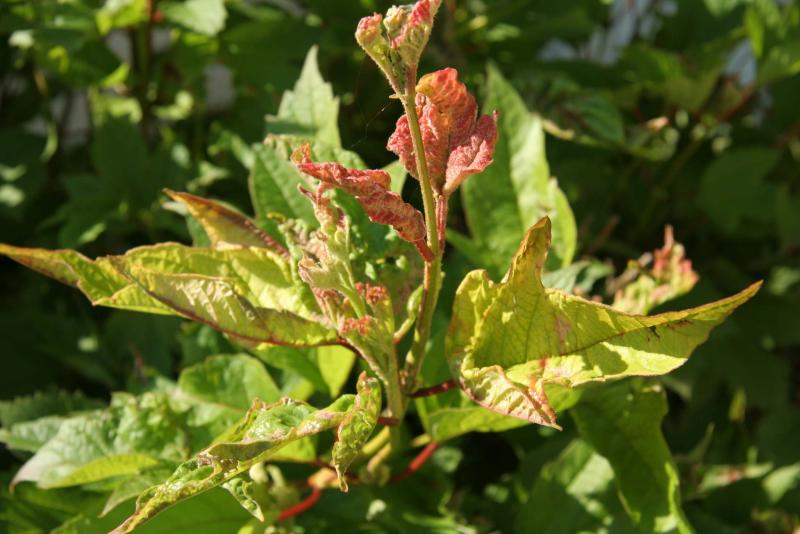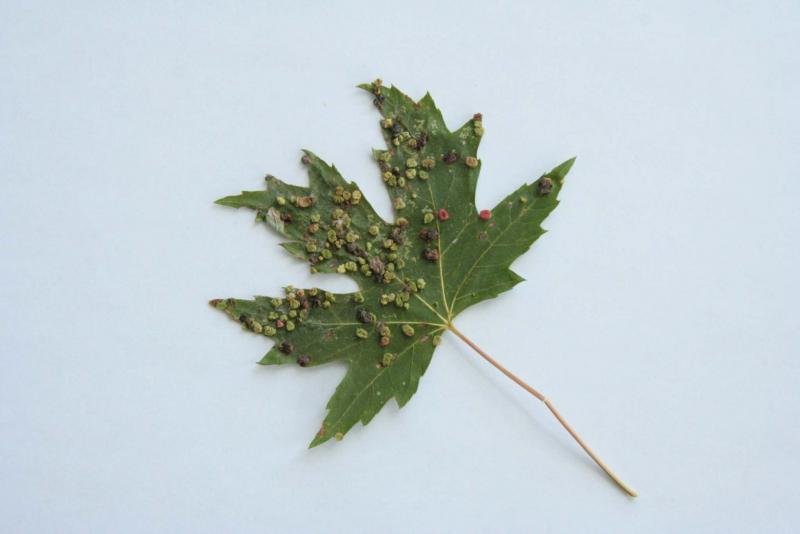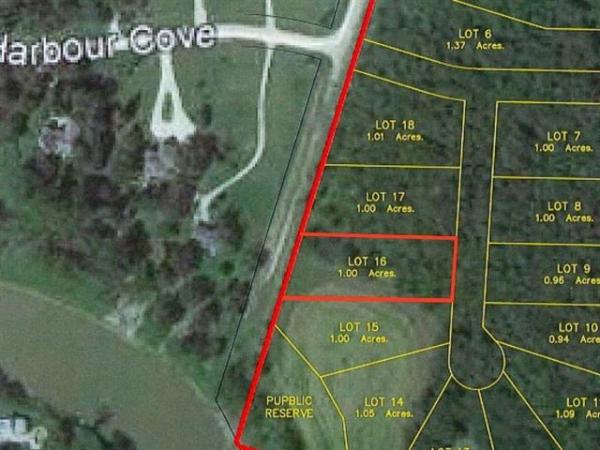
Plum bladder galls and Hawthorn rust

Twig gall mite and leaf rust

European cranberry gall mite

Hackberry leaf mite colony

Oak Rosette mite
There are thousands of known mite species around the world. Mites are, as their name suggest, very small. They are definitely not insects. Most are less than 0.3 mm long. Under a 100 power microscope they look like squashed cylinders or even cigar shaped. The most common of the mite groups in our area are the eriophyids. The adults have a mouth area at one end of their body and two pairs of legs at the other end of the body. Most other mite groups usually have four legs. We can’t see these mites with our eyes, only the damage they do to plants.
Not all trees and shrubs in our area are affected. They normally feed on leaves, but fine twigs can also be attacked causing a variety of distorted features. Most commonly tree leaves such as those on oaks, maples, hackberries, plums and poplars are targeted. They are also very common on cranberry shrubs. Their feeding patterns can vary quite a bit depending on the species of plant on which they are feeding. On maple and hackberry leaves the feeding characteristics typically show up as tiny squashed balls. On oak leaves their feeding can have a number of different appearances — from cottony pink and white ball-like clusters to flattened swellings to tiny multiple distorted leaf clusters. On the leaves of plums, they typically produce long, spindle like swellings appearing like tiny distorted roots. On some maple and cranberry leaves in particular, a red felt-like flattened surface feature can appear on the underside of the leaf upon which they are feeding. This red feature is called an erineum. It is most common on silver maple and European cranberry leaves.
The mites usually lay clusters of eggs often up to a hundred at a time. The tiny mites can be carried by various insects from one susceptible plant part to another. Aphids tend to be the most common carriers, but mites can attached themselves to the legs of other small insects such as leaf hoppers. Feeding by mites rarely causes death of the host plant, but they can kill individual leaves. Usually damage is restricted to unusual growth of the leaves or isolated patches of mite colony appearance on the leaves.
There are mites that infect poplar trees which produce a woody gall consisting of a colony of mites along a short piece of twig. Woody galls tend to be very rare on trees in my experience. Giant galls located commonly on the trunks of trees are usually referred to as burls. They are commonly associated with bacterial infection and insect infestation.
As mites are not insects, insecticides are not effective in their control. Once the damage is observed, there is very little that can be done to undo the damage. I have not been successful in finding miticides to control these pests. Miticides are generally very specific, but mostly they are not generally available in our area.
If you have suspected feeding damage this year, the following procedures should be followed to prevent them from returning the following year. Remove all fallen leaves and twigs from your yard whether they are on grass or soil. These fallen plant materials will likely have mite eggs on them. It is unlikely you will see these very tiny egg masses. This task can be very difficult especially if you have a large oak or silver maple tree, since almost every leaf can be infested.
Sometimes this removal may not be necessary. I have seen oak woodlands in one year in which nearly every tree leaf was infested with mites. In the following year, hardly any of the leaves had signs of infestation on them. I wish I had a good answer for that phenomenon.
The other means of control is to spray a horticultural dormant oil product over the entire tree or shrub in April to smother the over-winter eggs before they hatch in the spring. This is definitely the most recommended treatment to control mites.
viburnumtrees@shaw.ca
Michael Allen M.Sc.F., RPF (ret’d) is a consulting urban forester, tree diagnostician and certified arbourist. He owns Viburnum Tree Experts. He can be reached at 204-831-6503 or 204-223-7709. His website is www.treeexperts.mb.ca




